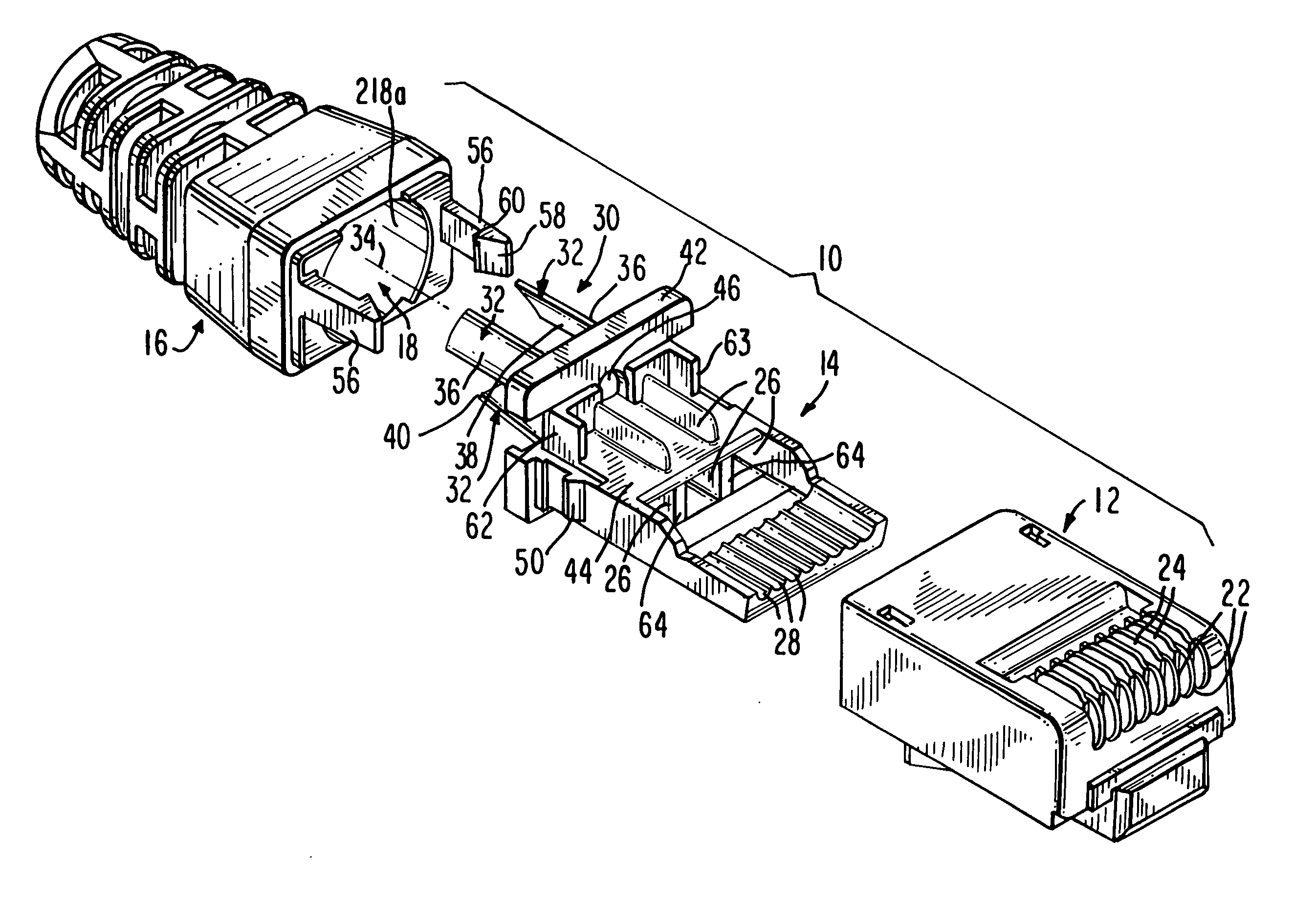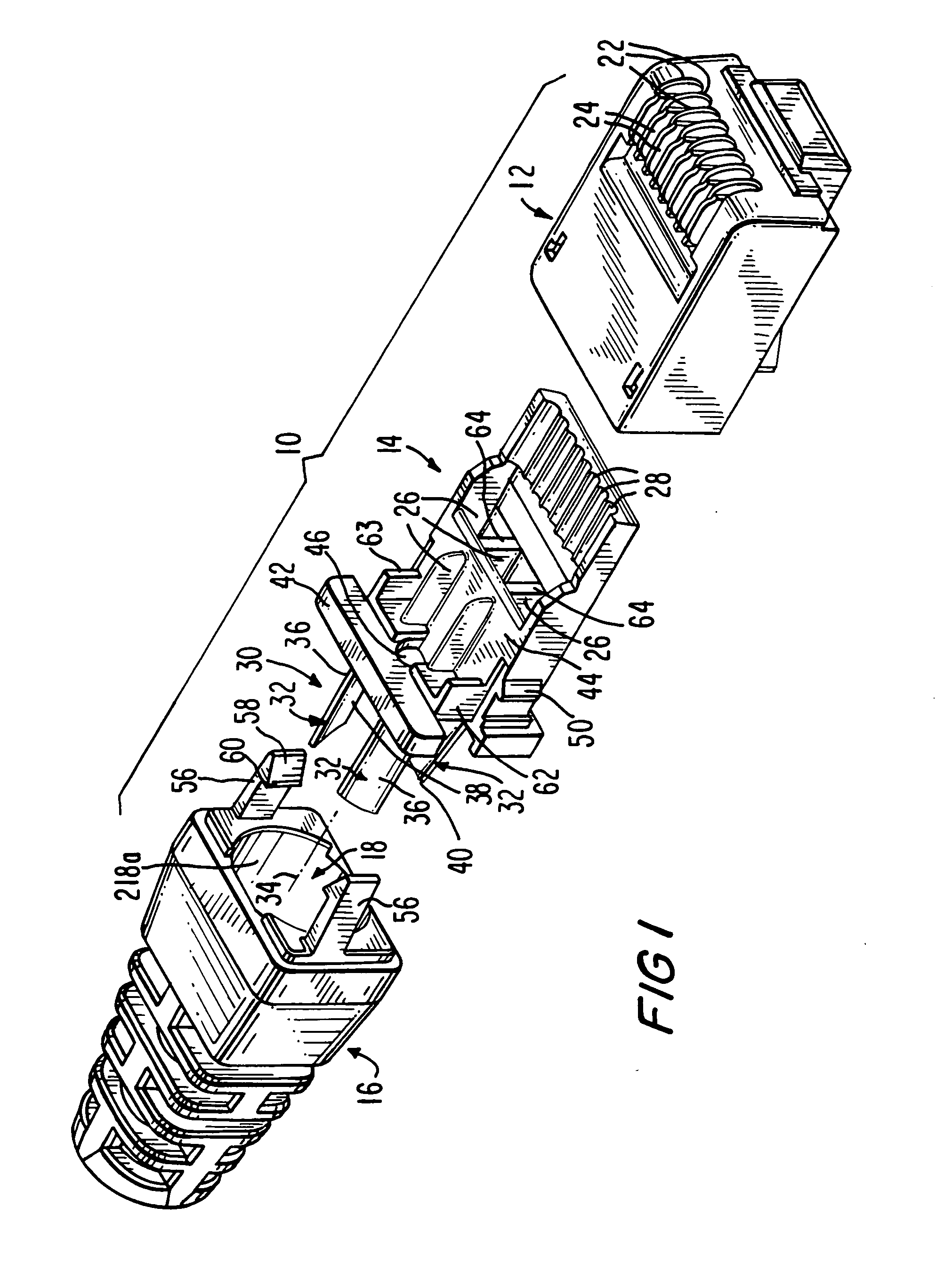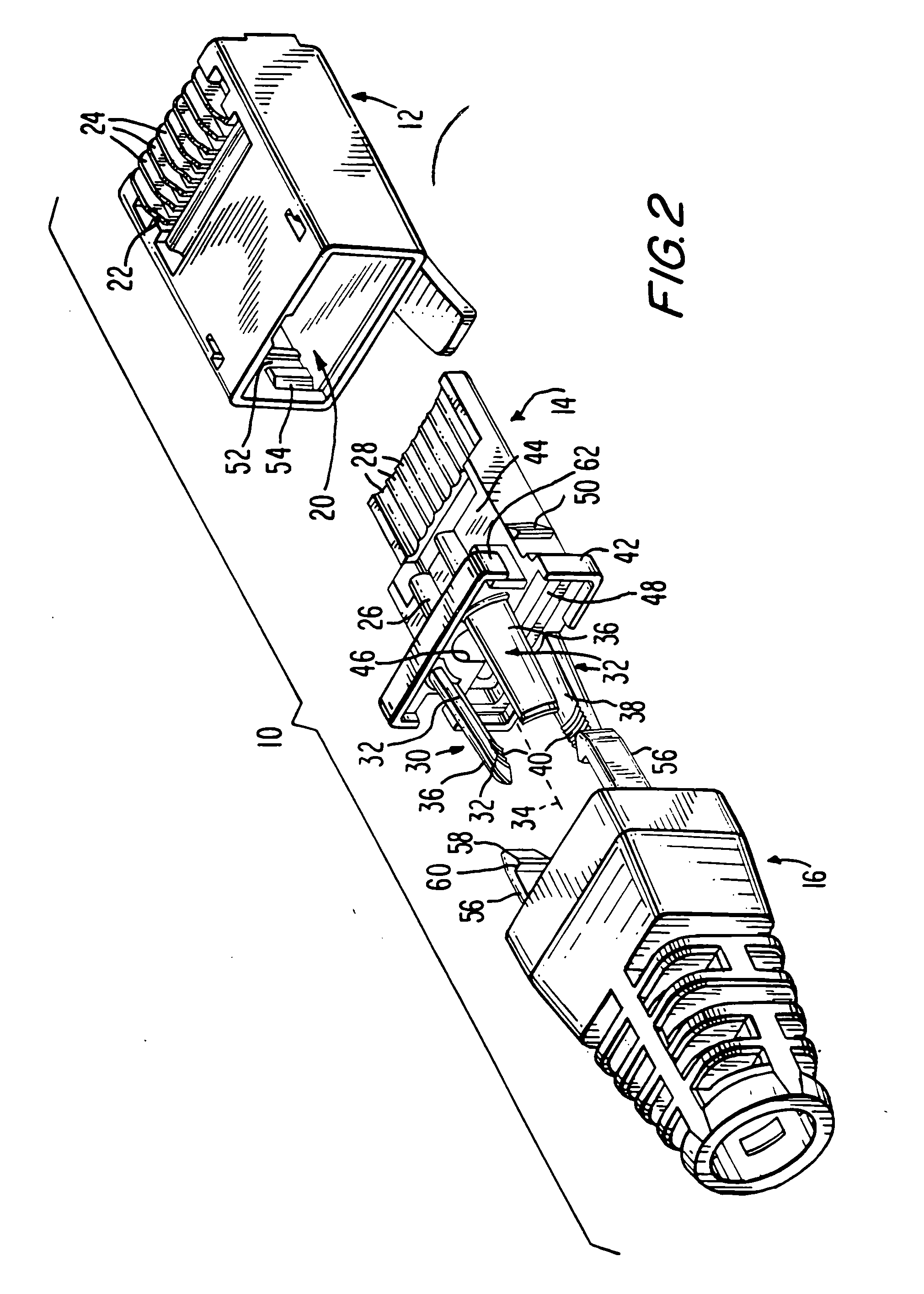Cable-terminating modular plug
a technology of modular plugs and plugs, which is applied in the direction of coupling device details, coupling device connections, contact members penetrating/cutting insulation/cable strands, etc., can solve the problems communication problems in networks, distortion and displacement of wire twisted signal pairs, etc., to prevent relative movement between the cable and the plug. , the effect of enhancing crimping
- Summary
- Abstract
- Description
- Claims
- Application Information
AI Technical Summary
Benefits of technology
Problems solved by technology
Method used
Image
Examples
Embodiment Construction
[0025] Referring to the accompanying drawings wherein like reference numerals refer to the same or similar elements, FIG. 1 shows a first embodiment of a modular plug in accordance with the invention designated generally as 10. The plug 10 is designed as a Cat 6 plug, i.e., meets the specific communications industry requirements for a modular plug capable of operating at frequencies up to 250 MHz. The plug 10 includes a housing 12 constructed for insertion into a mating connector such as a jack, a wire aligner 14 for aligning wires of a cable 8 terminated by the plug 10 and a strain relief member 16 defining a channel 18 through which the cable 8 passes.
[0026] Housing 12 includes a longitudinally extending cavity 20 opening at a rear of the housing 12. A front end of the wire aligner 14 is arranged in the cavity 20. A plurality of slots 22 are arranged at a front end of the housing 12 and each receives a contact blade 24. Housing 12 also includes other features typical of modular p...
PUM
 Login to View More
Login to View More Abstract
Description
Claims
Application Information
 Login to View More
Login to View More - R&D
- Intellectual Property
- Life Sciences
- Materials
- Tech Scout
- Unparalleled Data Quality
- Higher Quality Content
- 60% Fewer Hallucinations
Browse by: Latest US Patents, China's latest patents, Technical Efficacy Thesaurus, Application Domain, Technology Topic, Popular Technical Reports.
© 2025 PatSnap. All rights reserved.Legal|Privacy policy|Modern Slavery Act Transparency Statement|Sitemap|About US| Contact US: help@patsnap.com



